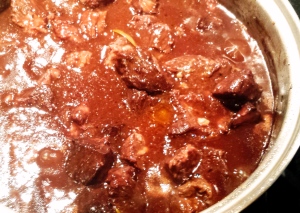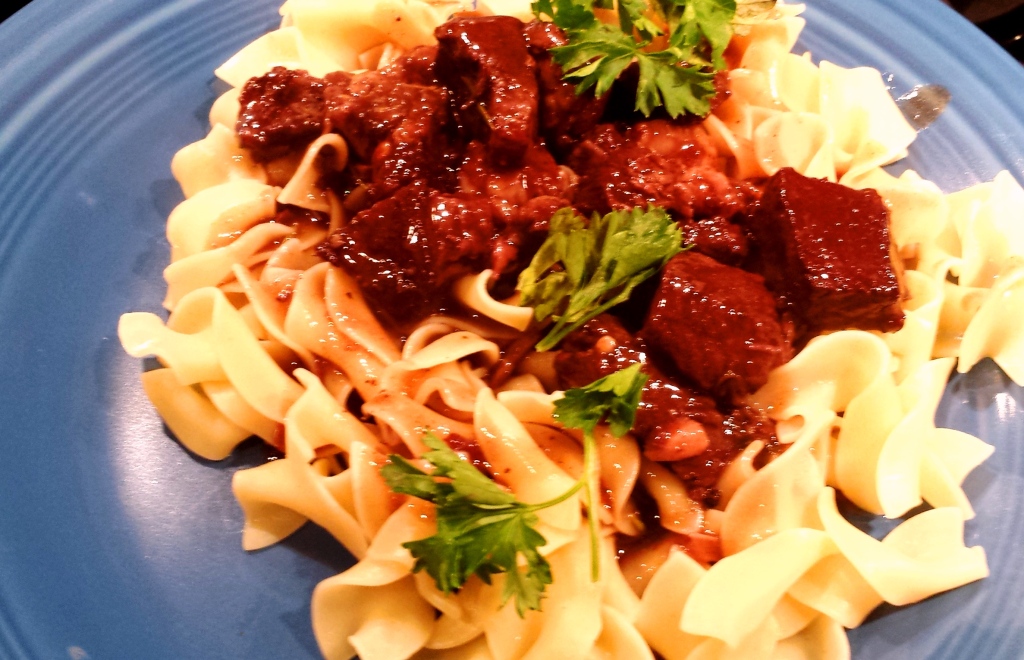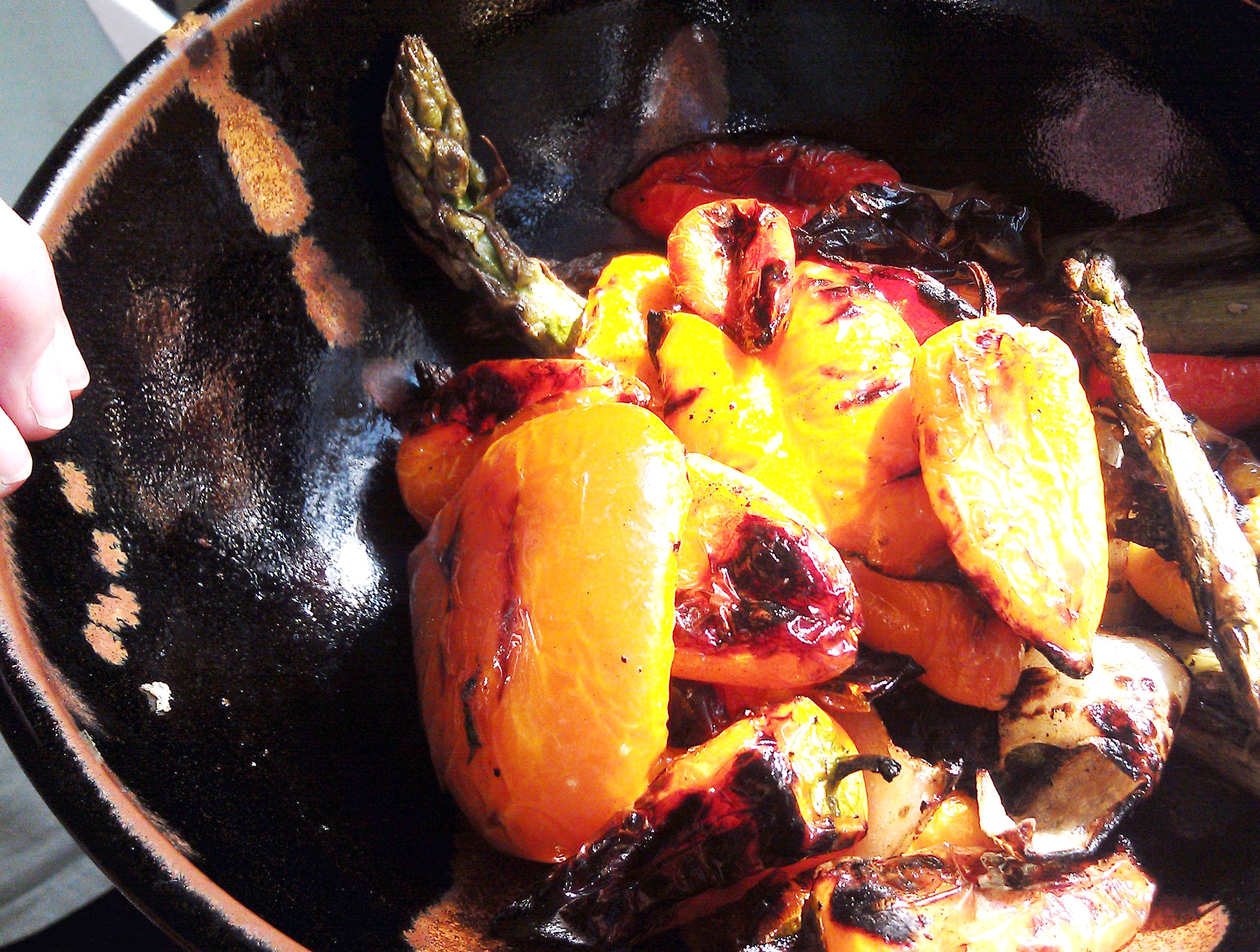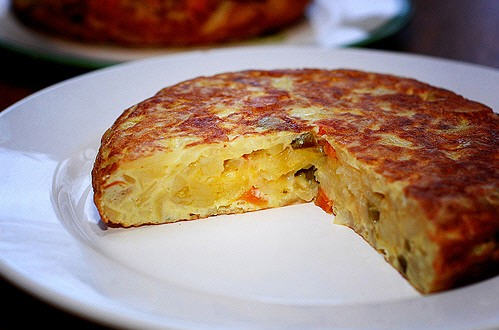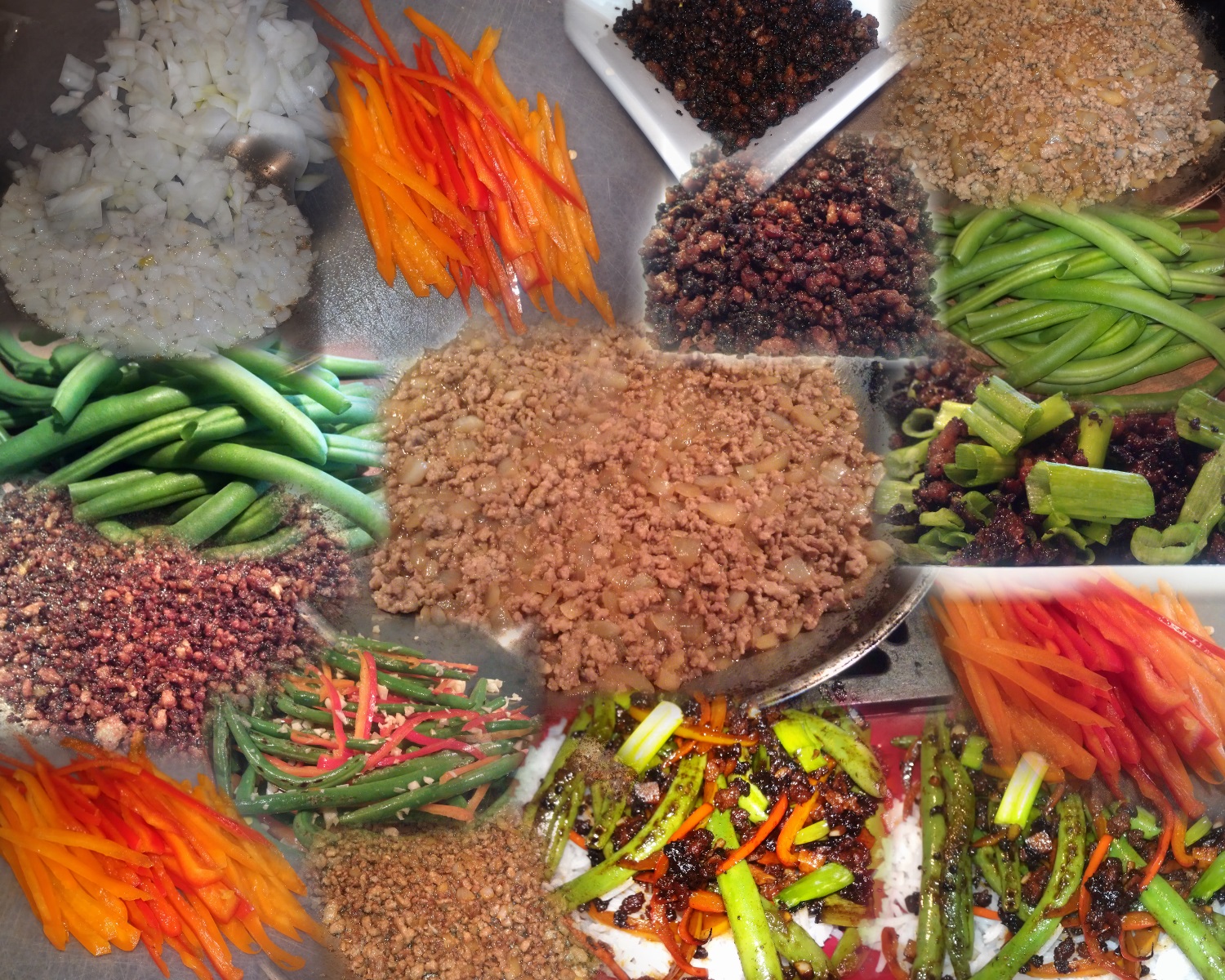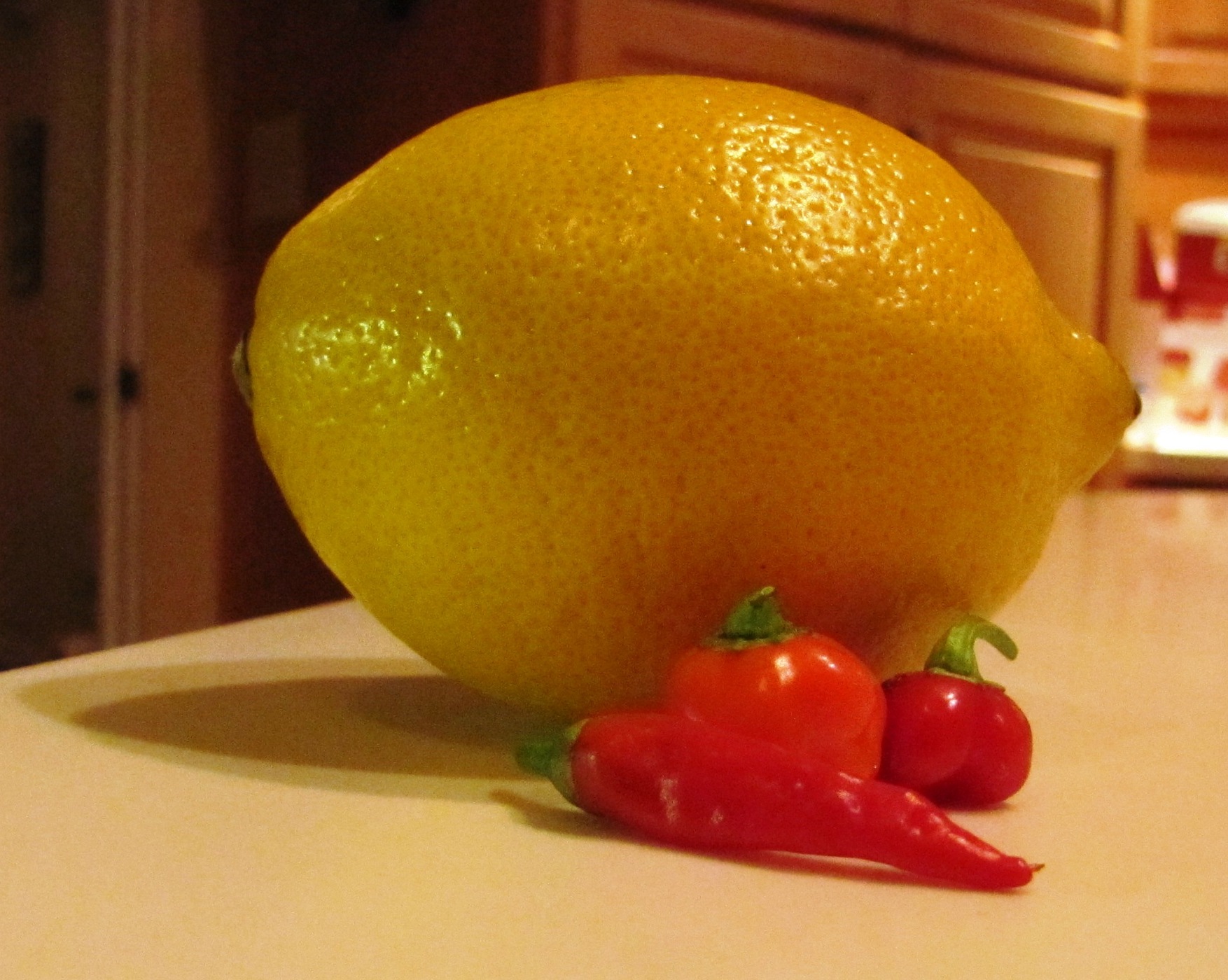Peposo – A Fiery Love Story
I love simple dishes. Many simple dishes come to us from medieval times – though they may sometimes use ingredients that are no longer easy to find, most dishes in the 12th century used bread, meat, fish, veggies – just as we do today, only differently, because – half a millennium and more!! And they were often quite simple, particularly if they were dishes of the people.
People learned clever ways to make inexpensive cuts of meat tender and delicious and ways to use spices to enhance that flavor.
One of my favorite old dishes is peposo – Tuscan pepper stew. Peposo is sometimes called Tuscany’s answer to chili. It’s a rich, savory stew that emphasizes simplicity of preparation and long slow cooking. This particular dish also emphasizes lots and lots and lots of black pepper, both cracked and ground. Sometimes, it is said, pepper was used so liberally to disguise a cut of meat that may have gone off a bit.
That’s not what we’re doing here.
The dish originated in the 13th century and is documented as having fed the laborers working to create tiles – an incredible-for-the-time 4,000,000 terracotta tiles – for the dome, or Duomo, of the Santa Maria del Fiore cathedral in Florence (1420-1436).
These workers were not wealthy, and used a cheap cut of meat that – I *think* – is today known as the shank. I didn’t have a shank when I made this dish, so I cut up a piece of chuck roast and it worked beautifully. I think any cut of beef like the shank or beef short ribs, boned, or skirt steak, or shin, would work just beautifully in this dish. It is definitely fun to experiment!
The first time I made Peposo, I followed the recipe closely and was pretty sure I was going to fry everybody’s esophagus. Except, of course, mine, as I am immune (gasp, wheeze!).
I was delighted to find that the large quantities of black pepper called for in the recipe just melted into the dish, which ended up peppery but not overly so, and entirely delicious.
So, of course, I tried using a bit more pepper – particularly the cracked pepper – and it was wonderful.
I’ve made a few other modifications to this dish so check out the recipe below – this is a different kind of beef stew and I think you’ll like it. The Italian workers certainly did!!
Peposa – Tuscan Black Pepper and Dry Red Wine Beef Stew
Ingredients
4 pounds boneless beef short ribs, trimmed and cut into 2-inch pieces. Alternatively, you can use beef chuck roast, skirt, or shin. Feel free to cut the pieces randomly, cut a few smaller (3/4″-1″) pieces, they will “dissolve” in the stew giving it even more flavor.
Kosher salt as described below
1 splash avocado oil
1 (750-ml) bottle inexpensive pinot noir or Chianti
1 cup water
4 shallots or 1 med. red onion, peeled and halved (if using red onion, quartered) lengthwise
2 medium carrots, peeled and halved lengthwise
1 garlic head, cloves separated, unpeeled, and crushed
4 sprigs fresh rosemary
4 bay leaves
1 handful fresh Italian parsley, sprigs and stems
1-1/2 tablespoon cracked black peppercorns, plus extra for serving
2 teaspoons freshly ground black pepper
1 tablespoon unflavored gelatin or cornstarch
1 tablespoon tomato paste
1 teaspoon anchovy paste
1 teaaspoon nuoc mam (Vietnamese fish sauce, seriously!)
2 teaspoons cornstarch
Egg noodles, prepared according to the packaged directions, or serve it straight up in a bowl with some crusty bread and a green veggie or salad. Or not. Peposa is a delicious, hearty
Method
Note: If you don’t have gelatin, substitute 1 T. cornstarch mixed with 2 T. cold water and stirred thoroughly.
Tip: To crack black peppercorns, put them in a plastic ziplock type bag. Seal the bag, place on your cutting board, and whack them with the smooth side of a meat tenderizer or – even – a hammer. Keep whacking them until all the corns are shattered and cracked. If you have any left over, you can put it in a sealed container and it will keep for a long time. Cracked pepper lends a very different taste to this dish than the ground pepper – it delivers more of the floral notes of the peppercorn. Just smell it – then compare the aroma to that of freshly ground pepper from the same batch of peppercorns. Quite a difference!
1. Toss beef and 1-1/2 Tablespoons salt together in a large bowl. The best way is to mix it with your hands. Let stand at room temperature for 30 minutes. Adjust oven rack to lower-middle position and heat oven to 300 degrees.
2. Heat oil in large Dutch oven over medium-high heat until just smoking. Add half of beef in single layer. Don’t move the beef for a couple of minutes until it is well browned and moves easily. Flip meat and cook until all pieces are well browned on at least two sides. Keep an eye on the fond (the gooey brown stuff that’s forming on the bottom of the pot as the meat caramelizes in the oil) and if it appears to be smoking or beginning to burn, turn the heat down.
Add 2 cups of the wine, 1 cup water, shallots, carrots, garlic, rosemary, bay leaves, 1 T. cracked peppercorns, gelatin, tomato paste, anchovy paste, Nuoc Mam and remaining beef. Stir gently but thoroughly. Bring the stew to a slow simmer
Cover your pot tightly with a sheet of heavy-duty aluminum foil, then the lid. What you’re trying to do is create a good seal. Put the pot in the oven and cook until beef is tender, 2 to 2 1/4 hours, stirring halfway through cooking time to remix ingredients.
3. Remove the pot from oven. Using a slotted spoon, move the pieces of beef to a warm bowl; cover the bowl tightly with foil and set aside. Strain remaining sauce through a fine-mesh strainer into a container and separate out the fat. Let the strained liquid settle for 5 minutes, then return it to the pot.
4. To the strained sauce, add 1 cup wine, ground black pepper and bring the mixture to a boil over medium-high heat. Simmer briskly, stirring occasionally, until the sauce thickens to the consistency of heavy cream, about 12 to 15 minutes. Remember to scrape the bottom of the pot to prevent the thickening sauce from sticking and scorching.
5. Combine the remaining wine and cornstarch in small bowl. Reduce the heat under the sauce to medium-low, return the beef to pot, and stir in the cornstarch-wine mixture. Cover and simmer until just heated through, 5 to 8 minutes. Season with salt to taste – we didn’t use much extra salt, about 1 tsp., as we tossed the meat with salt at the beginning of the recipe.
Put some of the cracked peppercorns in a small server and serve with the dish. This dish is even better the next day, if there’s any left!!



